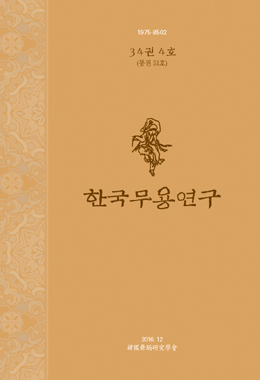본 연구는 한국전통 춤에 내재된 한, 멋, 신명의 민족적 정서들에 대한 신화적 접근으로 산수유기에서의 `산수`와 `풍류도`를 통해 한국 춤의 기원과 사상적 의미는 물론 춤사위의 내재된 예술성을 다시 한 번 재 고찰해 보는데 본 연구의 목적을 두었다. 이러한 접근은 `산수`의 공간적 의미를 통해 논의되었는데 치유와 놀이, 수행이라는 세가지 체험공간을 통해 한국 춤사위의 정서적 특징들이 비교 고찰되었다. 둘째 `풍류도`를 통한 접근은 접화군생(接化群生)의 실천 덕목을 통해 한국 춤사위의 표현방식이 지닌 자연미에 관한 미적 담론들이 구체적으로 논거 되었다.
The purpose of this study was, as a mythical approach to ethnic emotions such as sorrow, flavor, and ecstasy inherent in Korean traditional dance, to examine the origin and ideological meanings of Korean traditional dance and its artistic value through `Sansu` and `Pungryudo` of Sansuyugi. First, for the approach through the spatial meanings of `Sansu`, the emotional characteristics of Korean traditional dance were compared and analyzed using three types of experience space, that is, healing, play, and performance. Second, for the approach through `Pungryudo`, esthetic discourses regarding natural beauty inherent in Korean traditional dance were specifically discussed using practical virtues of Jubhwagunsaeng.




